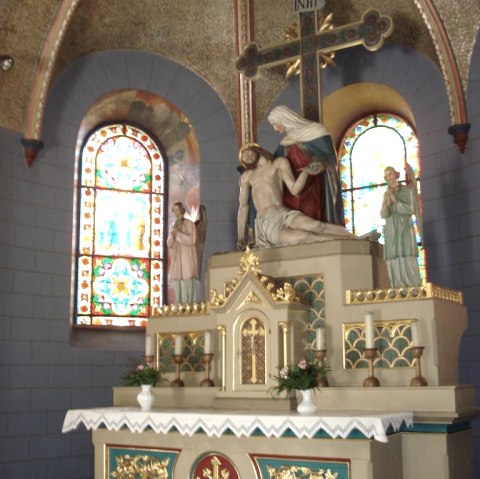Quelle im Nettepark „Hetzebue“
Plaidt
In the original cadastre of Plaidt from 1826, the Prussian surveyors from outside the town called this small spring and the surrounding land "Im Hützeborn". In dialect it is called "Hetzebue", whereby the "ue" is not pronounced like "ü" but "u". In High German it is called "Hitzeborn", which refers to a warm spring. The water temperature is clearly in the positive range all year round. When the sewage pipes were laid from the old sewage treatment plant behind the school to the sewage treatment plant in Andernach in the late 1990s, which runs right under the path in this part of the park, the "Hetzebue" was completely buried. A few years later, it fought its way back to the surface. The Plaidter Geschichtsverein (Plaidter History Society) had the spring restored in 2014 so that a short rest can be taken at this point and the spring bed can be walked on.










